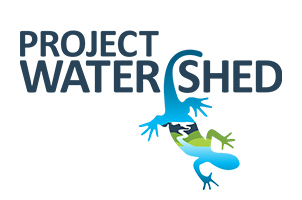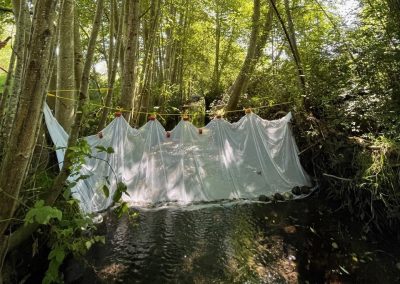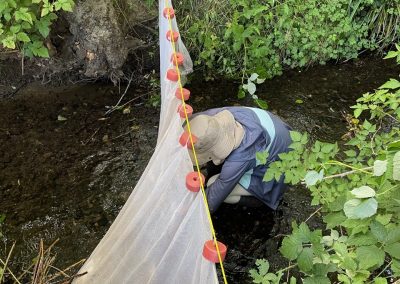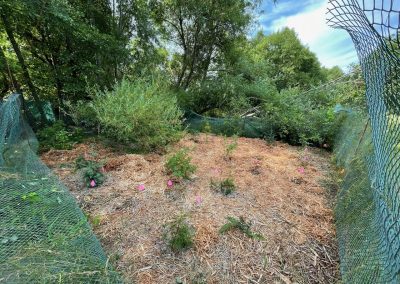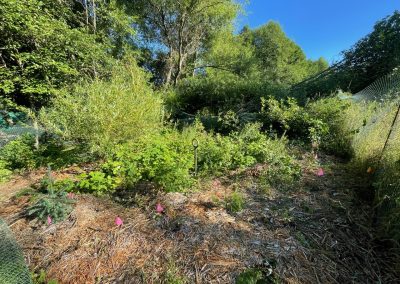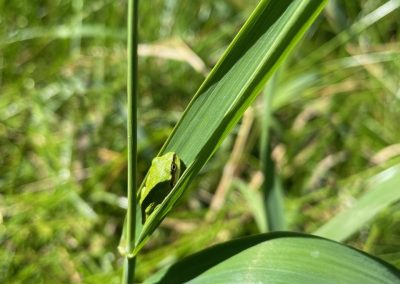Technician Tuesday Report – Continued Invasives Management and Fish Netting – July 26
Happy Technician Tuesday!
At Kus-Kus-Sum, Renée and Cain completed a plant inventory of the north-end vegetation. This involved flagging each individual plant and categorizing it into coniferous, deciduous, or shrub. This will help to document the mortality rate of the vegetation that was planted in the spring. Working at Kus-Kus-Sum was both Renée and Cain’s favorite part of the week!
At the Mallard Creek site, the team did some invasive species management where we are trying to control large patches of reed canary grass (Phalaris arundinacea). They laid down thick paper and rocks on top of the grass to block access to sunlight and prevent the grass from taking over. They will come back next year to see if this method was an effective form of management.
At Glen Urquhart, Renée and Cain continued their work from last week; a lot of weeding and mulching along the fenced areas that were planted with native plants in the spring. They both agree that they need thicker gloves when pulling out all of the blackberry and thistles!
Fish nets were installed in the creek as the first step to start the zone of isolation for the riffle construction that is set to happen in the next few weeks.
A riffle is a shallow area of fast moving water in the stream where rocks break the surface. When the fast moving water runs over the rocks, oxygen is added to the water from the turbulence.
In between the two nets, they set fish traps which they will check and empty every morning until the water for that section is diverted away for construction. They both found it super interesting to learn about the whole process of trapping fish and diverting water for the construction to proceed as well as learning about how the riffles will be constructed.
Related Posts
Mallard Creek Restoration Update for 2024
Restoration work in Mallard Creek will continue this year, including invasive removal, restoring connectivity, and trial planting of a new riparian species. Volunteer events starting in September 2024.
Volunteer at Kus-kus-sum Chamber of Commerce Event
We are showing Kus-kus-sum off to businesses in the Valley through a Chamber Business to Business event. We are looking for a few volunteers to assist with this event.
Coastal Plant Monitoring
Get involved with our new vegetation community science monitoring program!
Spring Field Trips
Throughout May and June Project Watershed will be taking elementary school classes out on field trips to learn about estuary and coastal ecology and to assist with planting and plant maintenance.
Working Together to Identify Forage Fish Spawning Beaches
This year marks the 5th year of a partnership between Comox Valley Project Watershed Society and North Island College on a long-term study to examine intertidal spawning habitats of forage fish in the northern Salish Sea.
Glen Urquhart Update – Spring 2024
Latest news from Glen Urquhart restoration progress for spring 2024.

